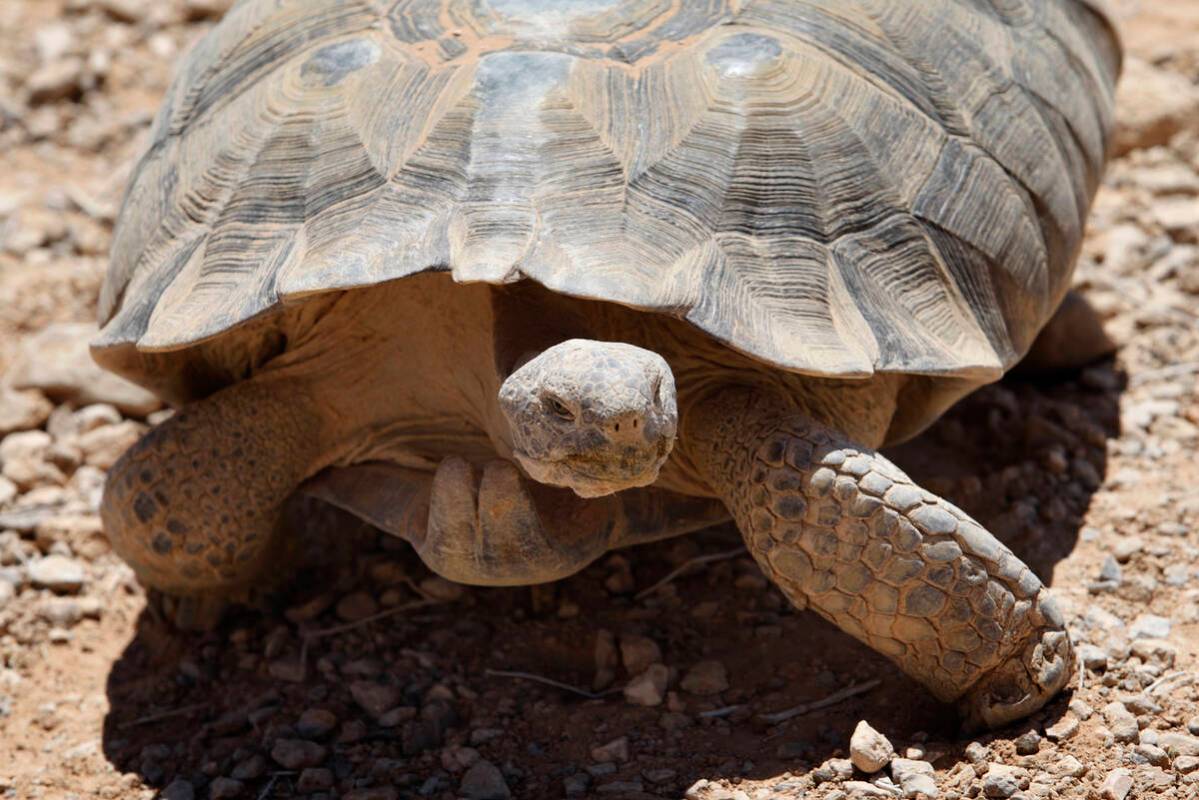Southern Nevada’s desert tortoises getting help to cross the road

Long before Southern Nevada built its winding highways, desert tortoises roamed freely without consequence. For these federally protected animals, crossing the street without a dedicated path could mean a death sentence.
Along a 34-mile stretch of U.S. Highway 93 near Coyote Springs, fencing and underground tortoise crossings will allow for more safe passage.
“We see substantial road mortality and near-misses in this area,” said Kristi Holcomb, Southern Nevada biological supervisor at the Nevada Department of Transportation. “By adding the fencing, we’ll be able to stop the bleed.”
The federal Department of Transportation awarded Nevada’s transportation agency a $16.8 million grant to build 61 wildlife crossings and 68 miles of fencing along the highway. Clark and Lincoln counties, as well as private companies such as the Coyote Springs Investment group, will fund the project in total.
Under the Endangered Species Act, the federal government listed Mojave desert tortoises as threatened in 1990. The project area includes the last unfenced portion of what the U.S. Fish and Wildlife Service considers to be the desert tortoise’s “critical habitat.”
In Clark County, some keep desert tortoises as pets, adoptions for which are only authorized through one Nevada nonprofit, the Tortoise Group. Environmentalists in the area have long worried that sprawling solar projects may have an adverse effect on tortoise populations. As many as 1,000 tortoises per square mile inhabited the Mojave Desert before urban development, according to the Center for Biological Diversity.
Crossings prevent inbreeding
One major reason that connecting critical habitat across a highway is paramount is to prevent inbreeding, Holcomb said.
“When you build a highway down the middle of a desert tortoise population, they become shy about crossing the highway,” Holcomb said. “By installing tortoise fences, we’ll give the tortoise population a chance to recover.”
Desert tortoises tend to walk parallel to the fences, which will lead them to the crossings they need to go to the other side. Promoting genetic diversity is one way different tortoise populations can be stabilized, Holcomb said.
The Nevada Department of Transportation doesn’t have a set timeline, and the project will need to go through an expedited federal review process to ensure full consideration of environmental effects.
“Be mindful, not only of tortoises that might be on the roadway, but also of our impacts on tortoises,” Holcomb added.
Contact Alan Halaly at ahalaly@reviewjournal.com. Follow @AlanHalaly on X.